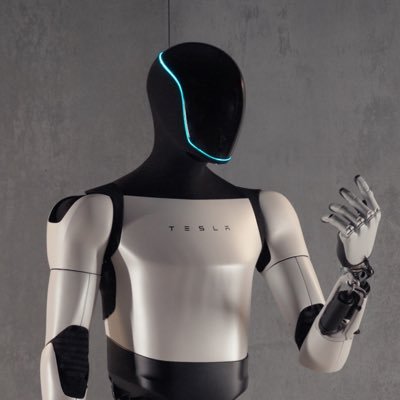When I saw Elon Musk present the Cybertruck and later the Tesla Optimus robot, I thought to myself, “Man, I want to own one of those robots.” But here’s the catch: I only have $1,000. The big question is, can I buy that robot with just $1,000?
Let’s break this down, because it’s not just a question about the future of robotics; it’s about how we approach big goals with what we have today. I’ll give you four different strategies to think through this problem. And I want to know, which one resonates with you?
First off, if you haven’t seen the Tesla Optimus bot in action, you should. It’s not Optimus Prime—although, that would be cool—but this bot is amazing. I watched it pour coffee, move around with a human-like presence. You can immediately see how Elon’s vision of a future where each of us has a robot assistant is getting closer.
So, can you buy it with $1,000 today? That’s where things get interesting. To answer that, let’s look at how Tesla has done things in the past, like with the Cybertruck. They started taking reservations for just $250 back in 2021. But fast-forward to 2024, and the price is hovering around $60,000. So what happened in between? Well, innovation takes time. The Cybertruck didn’t materialize overnight, and the same will happen with the Tesla Optimus bot. Based on Tesla’s track record, here’s what I think will happen: announcements around 2025, reservations between $250 to $1,000, and the first deliveries probably won’t happen until around 2029. And by then, the price could be in the $50,000 range.
Now, that’s a long timeline, but it’s important to keep in mind. If I only have $1,000, how can I turn that into $50,000 by 2029? Let’s explore four possible strategies.
Option 1: Investing in Index Funds
One of the simplest strategies is to invest in the S&P 500. Historically, it’s returned about 10% per year. If you start with $1,000 today, in five years, you’ll have about $1,500, and by 2029, maybe closer to $2,500. While that’s a nice return, it’s still far short of the $50,000 we’re aiming for. To reach that goal through traditional investing, you’d actually need to start with about $31,000 today, which is obviously much more than our $1,000.
Option 2: Betting on Bitcoin
Now, let’s talk about Bitcoin. Over the past five years, Bitcoin has delivered returns of over 600%. That’s staggering. If that kind of growth continues, $1,000 today could theoretically grow to around $7,000 or $8,000 in five years. Some Bitcoin enthusiasts believe the price could soar to $360,000 or even $1 million per coin in the next decade. If that happens, your $1,000 could multiply much faster, potentially getting you closer to your $50,000 target. But this is speculative, and Bitcoin’s volatility means you could lose everything, too.
Option 3: Tesla Stock
If you believe in Tesla’s vision for the future, why not invest directly in Tesla stock? Over the past five years, it’s grown by more than 1,500%. If Tesla continues to innovate with robots, self-driving cars, and energy solutions, its stock could go much higher. Some analysts, like Cathie Wood, have even predicted a share price of $4,000. If that happens, your $1,000 could grow significantly. However, based on the historical trajectory, you would likely need around $4,000 invested in Tesla today to have $50,000 by 2029.
Option 4: High-Risk Meme Coins
For the more adventurous, there’s the world of meme coins. Shiba Inu and Dogecoin are wild examples of assets that skyrocketed 10,000% in a short span. Imagine if something similar happens again. With just $1,000, you could potentially ride a wave of speculative mania and end up with far more than you started with—though you could also lose everything. These coins are unpredictable, but they’ve turned some people into millionaires practically overnight.
The Real Question
So, what’s the best strategy to go from $1,000 today to owning a $50,000 Tesla Optimus bot in 2029? Maybe you’ll take the safer route and invest in an index fund, or maybe you’ll speculate on Bitcoin or meme coins. Personally, I’m fascinated by the idea of investing in the very company that’s building the robot I want to own—Tesla itself. But I’m curious to hear your thoughts. How would you approach this? What strategy do you think gives the best balance of risk and reward?
Let me know in the comments, and maybe we can explore these strategies more deeply together. At the end of the day, it’s all about planning for the future, whether that’s owning a robot, or just building a life where we can afford the things that excite us.

13 responses to “How to Buy a Tesla Optimus Bot with $1,000: Four Strategies for Turning Dreams into Reality”
comprar kamagra en chile
kamagra pas cher pas d’adhésion
enclomiphene without a prescription canada
order enclomiphene no rx needed
get androxal
how to buy androxal cheap with prescription
ordering dutasteride generic dutasteride
cheap dutasteride american express canada
get flexeril cyclobenzaprine price for prescription
Buy flexeril cyclobenzaprine online without a perscription
cheapest buy gabapentin generic does it work
discount gabapentin
cheap fildena mastercard buy
get fildena cheap online canada
order staxyn generic work
buying staxyn generic in usa
discount itraconazole cheap from usa
cheap itraconazole uk cheapest
cheap avodart cheap canada pharmacy
buy cheap avodart generic vs brand name
ordering rifaximin overnight no rx
buy rifaximin generic good
cheapest price for xifaxan
xifaxan ed drug
kamagra žádný skript přes noc
online objednávka kamagra